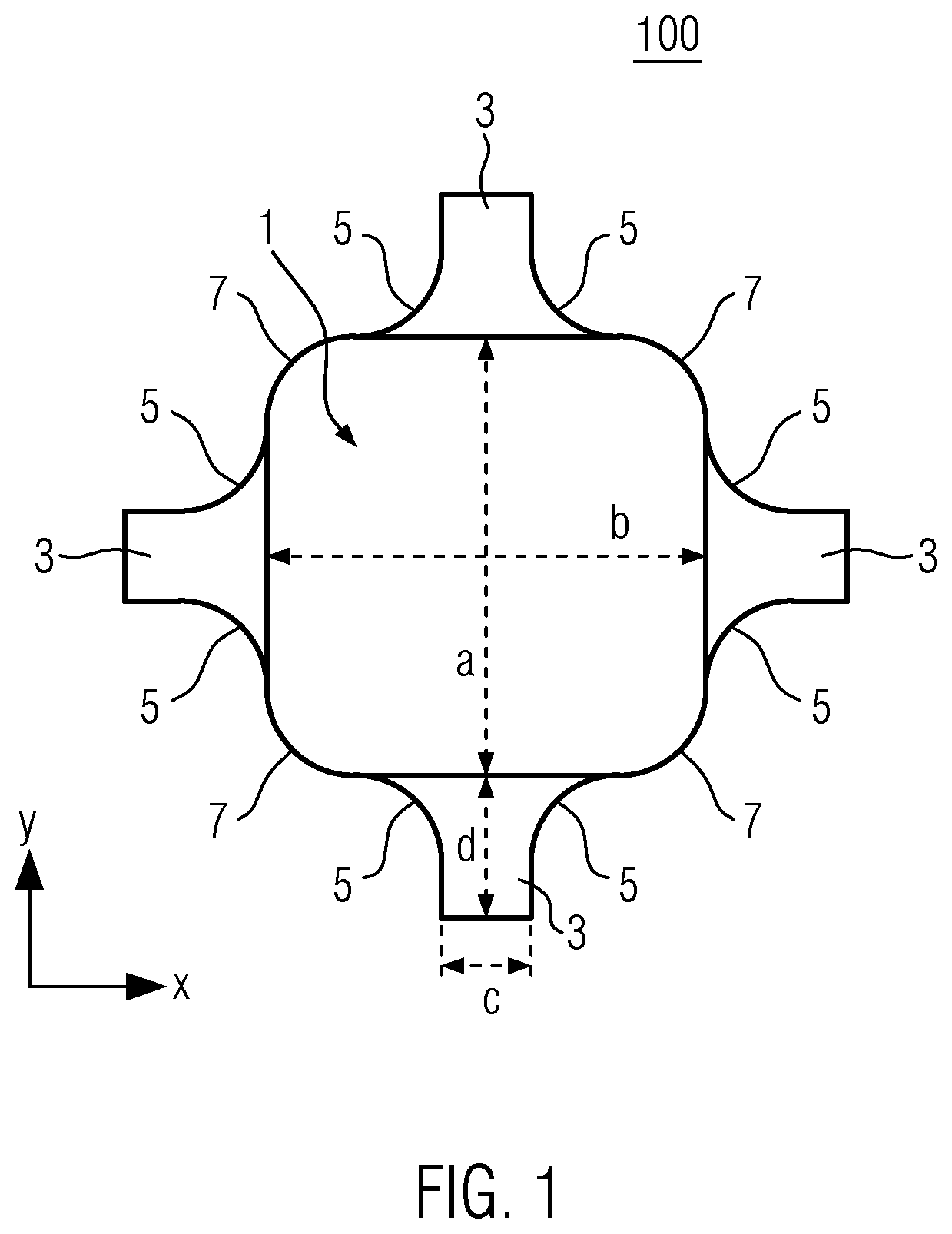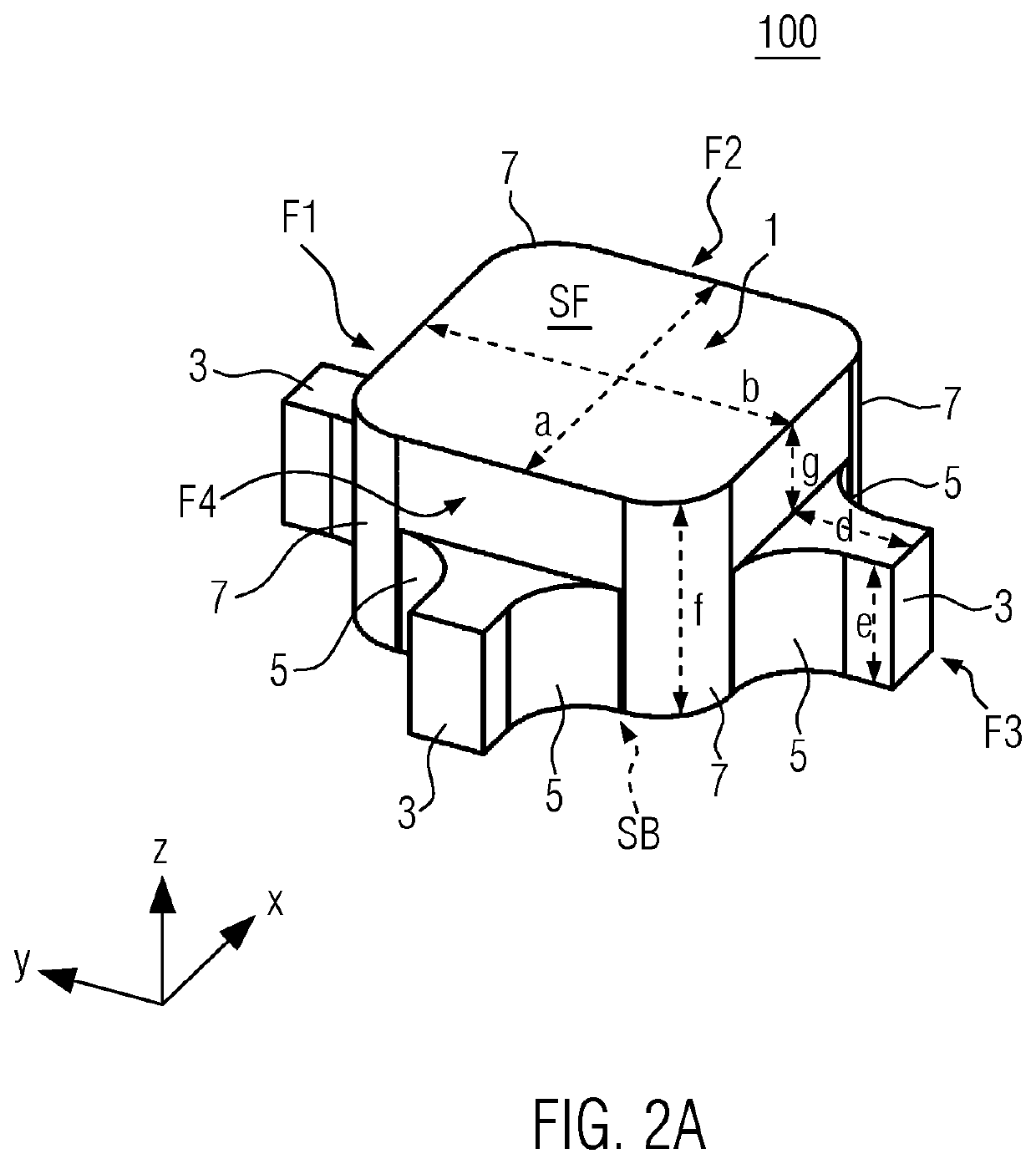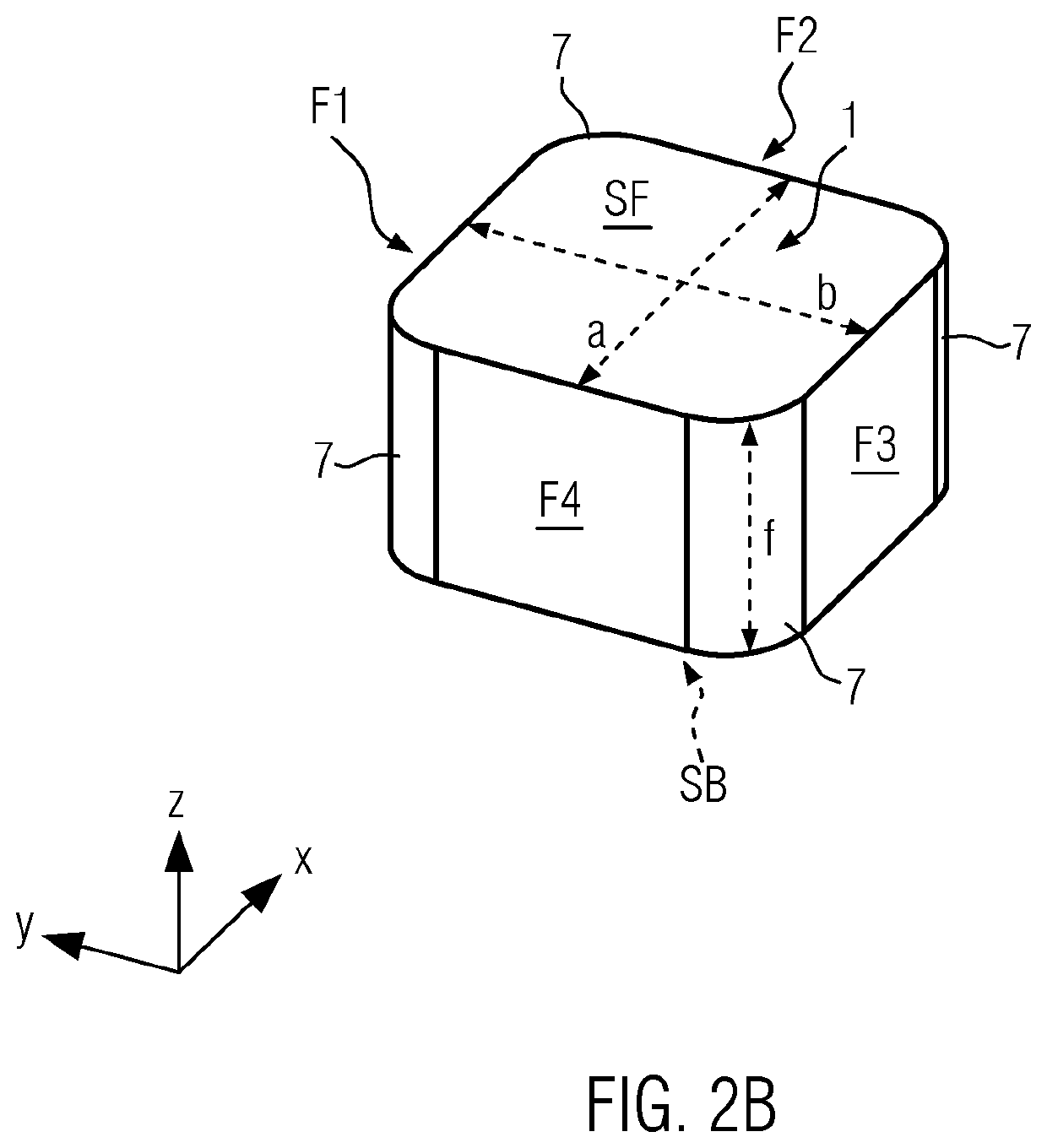Monolithic broadband ultrasonic vibration isolation with small form factor
a technology of ultrasonic vibration isolation and monolithic broadband, which is applied in the manufacture of shock absorbers, springs/dampers, instruments, etc., can solve the problems of increasing production costs, reducing thermal conductivity, and lack of available modes, and achieves the effect of increasing the reliability of the band gap of the manufactured devi
- Summary
- Abstract
- Description
- Claims
- Application Information
AI Technical Summary
Benefits of technology
Problems solved by technology
Method used
Image
Examples
Embodiment Construction
[0040]FIG. 1 depicts a schematic top view of a so-called unit cell 100 of a phononic crystal according to the present disclosure. FIG. 2A represents the corresponding stereoscopic side view of the unit cell 100 of FIG. 1. In FIG. 1, the unit cell 100 for a phononic crystal is shown. The unit cell 100 represent a single structure to be repeated in an array-like fashion for a phononic crystal. The unit cell 100 comprises a resonant mass 1, said resonant mass 1 mostly extending in a two-dimensional plane as shown in the top view of Figure. The two-dimensional plane is spanned in directions x and y as indicated by the corresponding coordinate system, it may therefore also be termed x-y plane. In the projection view of FIG. 1, the projection of resonant mass 1 exhibits the shape of a right Euclidean parallelogram, i.e. a rectangle. As is shown in FIG. 2A the resonant mass 1 is in fact a three-dimensional body and extends somewhat in a direction perpendicular to the drawing plane of FIG. ...
PUM
 Login to View More
Login to View More Abstract
Description
Claims
Application Information
 Login to View More
Login to View More - R&D
- Intellectual Property
- Life Sciences
- Materials
- Tech Scout
- Unparalleled Data Quality
- Higher Quality Content
- 60% Fewer Hallucinations
Browse by: Latest US Patents, China's latest patents, Technical Efficacy Thesaurus, Application Domain, Technology Topic, Popular Technical Reports.
© 2025 PatSnap. All rights reserved.Legal|Privacy policy|Modern Slavery Act Transparency Statement|Sitemap|About US| Contact US: help@patsnap.com



